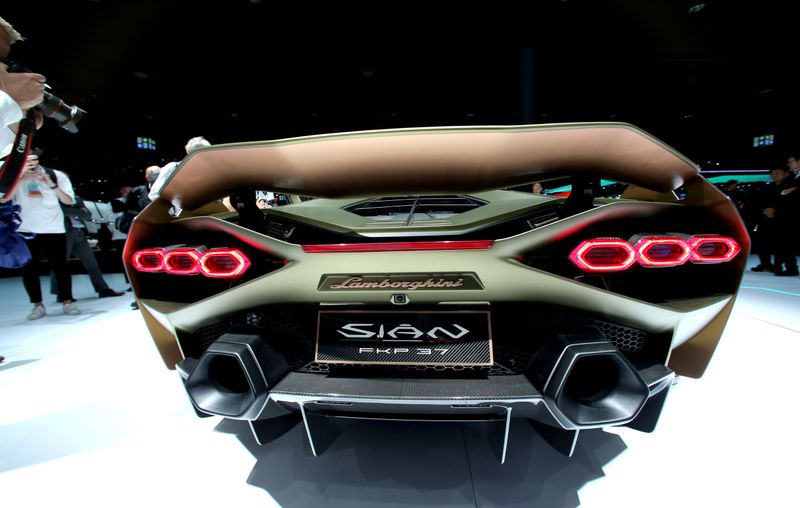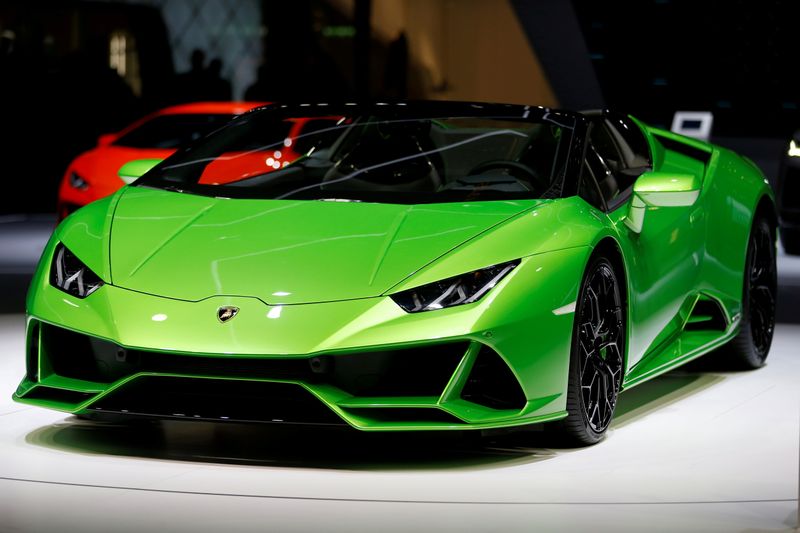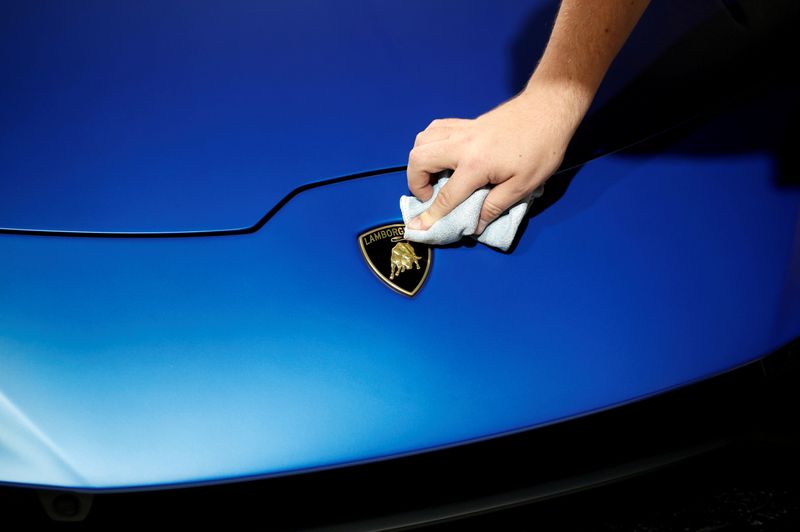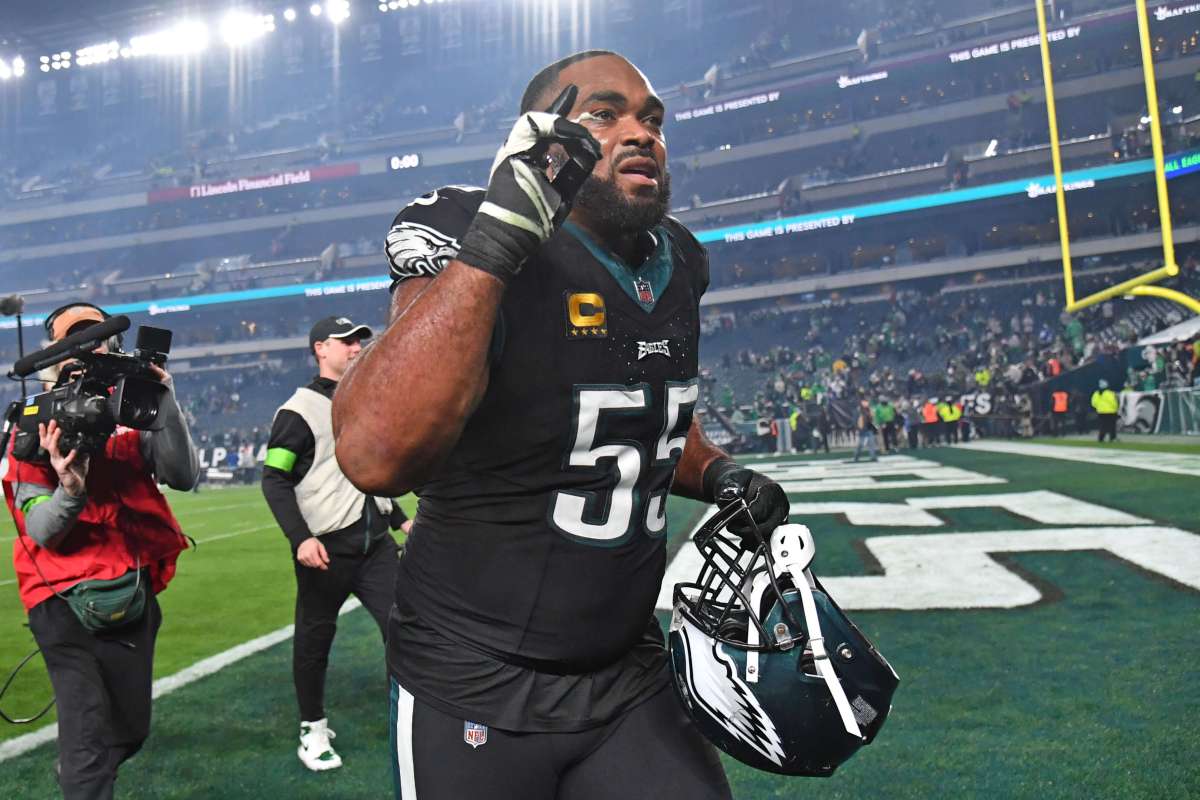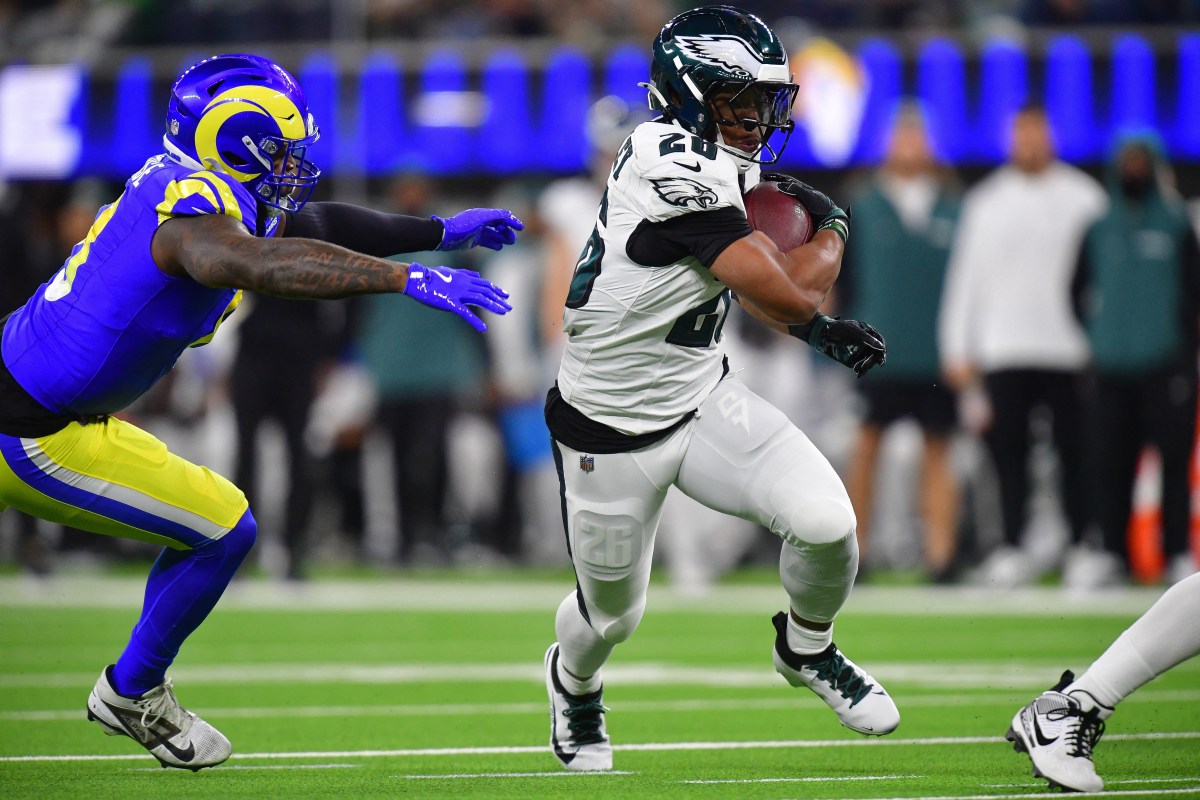FRANKFURT (Reuters) – Volkswagen <VOWG_p.DE> is drawing up plans to carve out Lamborghini and has sounded out bankers and potential investors about listing the Italian sports car maker on the stock market, two sources familiar with the matter told Reuters.
They said the German carmaker is looking to make Lamborghini a more independent unit within its stable of car brands and is discussing long-term supply deals, both steps which would make it easier to carry out an initial public offering (IPO).
“This is a first step which gives VW the option to list the unit further down the line,” one of the sources familiar with the discussions about the future of Lamborghini told Reuters.
The source said there was no formal decision to divest Lamborghini and the timetable of any deal remained unclear.
A second source familiar with the talks about Lamborghini, which is currently part of Audi, said Volkswagen would retain a controlling stake in the supercar brand if it were to list.
Volkswagen declined to comment.
Reuters reported on Tuesday that Volkswagen was reviewing the future of its high-performance brands Lamborghini, Bugatti and Ducati as part of broader quest for more economies of scale as it shifts to mass producing electric cars.
Two company executives told Reuters the review could lead to technology partnerships for the sports car and superbike brands, restructuring, or other options including a listing or sale.
The value of Italian supercar manufacturer Ferrari <RACE.MI> has more than trebled since Fiat Chrysler <FCHA.MI> listed it in 2016 though shares in rival Aston Martin <AML.L> have slumped since its IPO in 2018.
Volkswagen’s management and supervisory board will host a five-year planning round in mid November and preparations to carve out Lamborghini could help executives make a decision on a sale or partial listing at short notice.
A third source familiar with the discussions said the future of all three brands was discussed at a supervisory board meeting last Friday, including how to electrify the Lamborghini and Bugatti brands through partnerships and investors.
Lamborghini’s Chief Executive Stefano Domenicali announced this week his departure from the sports car maker to take on a new job as president of Formula One.
‘IMPORTANT STEPS’
Volkswagen Group’s Chief Executive Herbert Diess said on Wednesday the carmaker would announce “important steps” about the company’s future before the end of the year.
A global clampdown on vehicles powered by combustion engines to curb carbon emissions has forced carmakers to accelerate the development of low-emission technology for their mainstream models.
California, for example, which accounts for 11% of U.S. car sales, plans to ban the sale of new gasoline-powered passenger cars and trucks from 2035, the State’s Governor Gavin Newsom said last week.
Volkswagen managers, however, are struggling to find the resources needed to electrify low volume sports car models such as Lamborghini and Bugatti, which sold 4,554 and 82 cars respectively last year.
By reviewing VW’s portfolio, Diess is slowly unwinding an empire built by his mentor, Ferdinand Piech, Volkswagen’s former chairman and chief executive who died in 2019.
Piech, who hired Diess in 2015, turned Volkswagen around by betting on modular construction techniques which allowed Audi, Seat, Skoda, VW and to use common parts for up to 65% of their construction.
Diess is taking a similar approach with electrification to boost economies of scale, developing a modular electric vehicle platform known as MEB, which will fit its mainstream compact and medium-sized vehicles – but not supercars.
Piech bought the Bugatti, Bentley and Lamborghini brands as part of an aggressive expansion push in 1998 which eventually turned Volkswagen into the biggest car company in the world by sales ahead of Toyota <7203.T>.
Diess told Reuters last month he had abandoned VW’s decades-old obsession with empire building and no-expense-spared engineering to free up resources for the development and mass production of electric cars.
“The product experience needs to be right. But you need to keep an eye on cost. You cannot run the business by focusing only on product,” Diess said.
(Editing by David Clarke)

